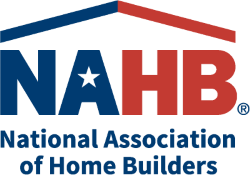NAHB: Housing Recession Deepens

Rising mortgage rates, high inflation, low existing inventory and elevated home prices caused housing affordability to fall to its lowest point since the Great Recession in the second quarter of 2022. According to the NAHB/Wells Fargo Housing Opportunity Index, just 42.8% of new and existing homes sold were affordable to a typical family. As more households are priced out of the for-sale market, a number of key housing metrics — including existing home sales, new home sales, single-family permits and single-family starts — have experienced significant year-over-year declines, characterizing the ongoing housing recession. Some markets are now seeing price declines as well.
The volume of new home sales in July fell to the lowest level since January 2016. Sales of newly built, single-family homes came in at a 511,000 seasonally adjusted annual pace, which is a 12.6% decline from the June rate and 29.6% below the estimate from a year ago. Sales-adjusted inventory levels are at an elevated 10.9-month supply in July. However, only 45,000 of the new home inventory is completed and ready to occupy. This count has been rising in recent months and is up 40.6% compared to a year ago. New home sales are likely to continue to show weakness in the months ahead.
Total existing home sales, as estimated by the National Association of Realtors, fell 5.9% to a seasonally adjusted annual rate of 4.81 million in July, the lowest level since May 2020. On a year-over-year basis, sales were 20.2% lower than a year ago. The July median sales price of all existing homes was $403,800, up 10.8% from a year ago, representing the 125th consecutive month of year-over-year increases — the longest-running streak on record. However, price growth is cooling quickly in most markets according to other reporting.
The softening of housing demand has led to ongoing declines for home builder sentiment, per the NAHB/Wells Fargo Housing Market Index (“HMI”). Builder confidence fell for the eighth straight month in August, falling six points to 49 and marking the first time since May 2020 the index fell below the key break-even measure of 50. The August buyer traffic number in the builder survey was 32, the lowest level since April 2014, excluding the spring of 2020 when the pandemic first hit. Roughly one-in-five (19%) home builders in the HMI survey reported reducing prices in the past month to increase sales or limit cancellations. The median price reduction was 5% for those reporting using such incentives.
The decline in the HMI is consistent with declines for single-family construction. Single-family starts decreased 10.1% to a 916,000 seasonally adjusted annual rate and are down 2.1% on a year-to-date basis. This is the lowest reading for single-family home building since June 2020. More declines lie ahead, as single-family permits decreased 4.3% to a 928,000 annual rate, and are down 5.9% on a year-to-date basis. NAHB is forecasting 2022 will be the first year since 2011 to record an annual decline in single-family home building.
The multifamily sector, which includes apartment buildings and condos, decreased 8.6% to an annualized 530,000 pace. Multifamily construction remains very strong given solid demand for rental housing. The number of multifamily 5+ units currently under construction is up 24.8% year-over-year. Multifamily development is being supported by a substitution effect, with frustrated or priced-out prospective home buyers seeking rental housing. Similarly, demand for single-family rental properties is rising, leading to gains for single-family built-for-rent construction. There were approximately 21,000 single-family built-for-rent starts during the second quarter of 2022. This is a 91% gain over the second quarter 2021 total.
The outlook for the housing market is now dependent on incoming inflation data and the Federal Reserve’s monetary policy. It appears, for example, that the core Personal Consumption Expenditures price index measure of inflation has peaked. And some economists are forecasting the Fed will decelerate its rate hikes, with perhaps a 50 basis-point hike in September, following the 75 basis-point hikes in both June and July. Nonetheless, the Fed will continue hiking, with the bond market pricing in the 10-year Treasury above 3.1% for the first time since late June.
In the bi-weekly newsletter Eye on the Economy, NAHB Chief Economist Robert Dietz provided the previous overview of the nation’s economy and its impact on the housing market.
Source: National Association of Home Builders

